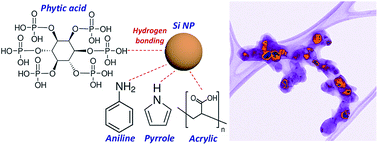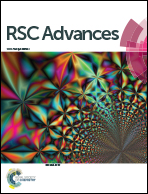Kinetics and electrochemical evolution of binary silicon–polymer systems for lithium ion batteries†
Abstract
Silicon is a promising anode material for lithium-ion batteries owing to its high specific capacity and low discharge potential. To diminish Si structural degradation and its anode-capacity fading due to the vast volume change during alloying and dealloying, effective binders assisted in the encapsulation of Si anode materials and enhanced their integral stability. Herein, two conducting-hydrogel coatings, polyaniline (PANI) and polypyrrole (PPy), are formed to trap the Si surface via a facile and environmentally benign sol–gel polymerization process. Functional groups from polymer hydrogels chemically promote the confinement of conducting shells on the Si surface, rendering the Si-hydrogel frameworks without resistive binders and carbon black. The effects of coating thickness and conductivity of PPy and PANI coatings on the electrochemical properties of Si anodes have been investigated, and compared to insulating polyacrylic acid (PAA)–Si blended electrodes. The kinetics and the physical evolution of the binary Si–polymer systems during electrochemical reactions have been systematically studied via electrochemical impedance spectroscopy (EIS). It has been observed that the degree of improvement of the cycling stability and the rate capability of the three Si–polymer systems decrease in the order of PPy > PANI > PAA.



 Please wait while we load your content...
Please wait while we load your content...